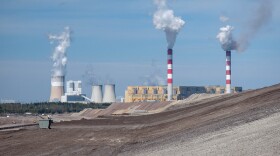The Trump administration decided this year to stop updating a federal database that tracked the cost of extreme weather, compiling an annual list of hurricanes, wildfires, and other disasters that caused at least $1 billion in damage. The government had maintained that database since the 1990s, with data going back to 1980. Evidently, this information was deemed to be unimportant, or at least inconvenient.
The nonprofit group Climate Central has revived the database and the scientist who is in charge of it there is the person who managed the federal database for 15 years from his position at the National Oceanic and Atmospheric Administration.
Climate Central released a report in mid-October revealing that through the first six months of this year, disasters across the United States caused more than $100 billion in damage, the most expensive year on record. Fourteen disasters each caused at least $1 billion in damage through the first half of the year. More than half of the costs incurred from extreme weather so far this year are related to the wildfires that tore through Los Angeles in January. These fires nearly doubled the all-time record for fire damage, adjusted for inflation.
The disaster database is used by the insurance industry, policymakers, and researchers to help understand and plan for a future in which storms, floods, fires, and other hazards will continue to be more frequent, intense, and damaging. It is a powerful tool for communicating these trends to the public. The current administration clearly sees this as something to avoid.







